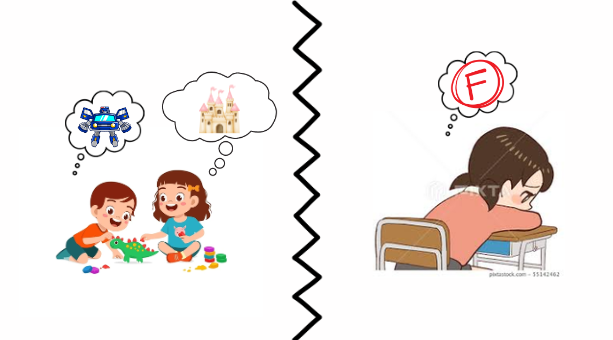From birth, children are taught two things. Right and wrong. If right, you get rewarded. If wrong, you get punished. Although this is beneficial for creating habits in young minds, is there a point where it becomes counterproductive?
Many students, especially under the judging eyes of their peers, veer away from answering questions due to the embarrassment they feel when they are wrong.
“From what I’ve seen in many students, school has trained them to simply seek the correct answer for everything. This has a lot of causes and massive effects,” North Penn High School Science Teacher Jereme Boucher stated.
According to Frontiers for Young Minds, making errors causes the brain to slow down. By slowing down, “the brain is trying to give itself more time, to avoid making the same mistake again,” which helps a person learn.
From a young age, many teachers deter their students from “guessing”. While they may be trying to avoid thoughtless answers, this is not always what goes through a young mind.
“Right from elementary school when teachers tell students things like, “don’t just guess”. That’s a great way to kill creativity, destroy critical thinking, and let the student know anything they say that is not the correct answer is simply not okay,” Boucher explained. “A much better approach would be to take that same student who is clearly just guessing and ask them why they think that might be the answer. All of a sudden, the student has to think about and justify their answer. They are now engaging in critical thinking as opposed to looking for only one set answer. The validation now comes from them having a deeper thought process as opposed to them having a correct answer.”
Even though it is frowned upon, guessing can allow for more learning to take place.
Although rigid yes and no answers are necessary when children are younger or even on tests, it can be detrimental in the long run to a child’s imagination and even self-confidence.
“There are emotional and social benefits to encouraging inference as well. When a student gets shot down for just guessing that is the end of their learning experience (for that moment or activity). This can be very detrimental to young students and their self-confidence,” Boucher explained. “By explaining to a student they weren’t guessing but inferring and by encouraging it and helping them understand what they were using to make their inference you can validate a student. Instead of shutting down a learning experience, you are engaging it. Also, the student is not developing a fear or social stigma around not knowing the right answer but is encouraged to actually participate and actively use their brains more.”
Guessing is not the only disruption in the learning process. Some students also encounter an issue with the lack of opportunities for their creativity to shine through.
“Some teachers do allow [allow] students to be free and offer creative project options while others just teach straight from the textbook. I think these opportunities should be offered more [as I feel] I learned better with authentic assessments that happen once a marketing period than I do with any classic chapter test,” North Penn Junior Sarah Salem explained.
With the way our education system is organized, right and wrong seems like the only way, but there are some potential loopholes.
“I don’t think teaching right and wrong is a good way of approaching anything. I feel that there is always room for debate, especially in subjects like history and science,” Salem concluded.


